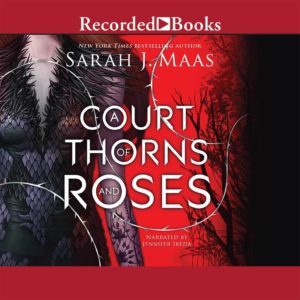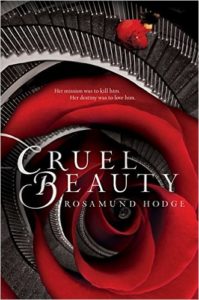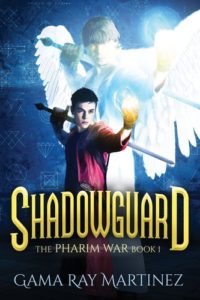From our families to yours, we wish you a wonderful season’s greetings. May the coming year bring good fortune and joy to all.
The Fictorians
From our families to yours, we wish you a wonderful season’s greetings. May the coming year bring good fortune and joy to all.
The Fictorians
Guest Post by Aubrie L. Nixon
 Let’s talk adaptions shall we? We all know what adaptions are, a retelling of sorts of a classic story. There are thousands, some are good…fantastic even. Others…not so much. If any of you know me, you know that my go-to story is ALWAYS Beauty and the Beast. Call me a sucker for romance, giant libraries, or broody heroes, I don’t care. Beauty and the Beast is, and will always be my favorite classic story. The wonderful thing about having it as a favorite, many other authors, film makers and story tellers love it too.
Let’s talk adaptions shall we? We all know what adaptions are, a retelling of sorts of a classic story. There are thousands, some are good…fantastic even. Others…not so much. If any of you know me, you know that my go-to story is ALWAYS Beauty and the Beast. Call me a sucker for romance, giant libraries, or broody heroes, I don’t care. Beauty and the Beast is, and will always be my favorite classic story. The wonderful thing about having it as a favorite, many other authors, film makers and story tellers love it too. The second adaption that I am head over heels in love with is Cruel Beauty by Rosamund Hodge. Cruel Beauty cast such a dark spell over me, with its intrigue and deadly mysteries that I finished it within one sitting. I could not put it down. It worked because again, it was so beautifully different that it felt like a whole new story. Many times, I thought that I had it figures out, but when I turned the page, realized I was very much mistaken. The curse and the beast are so dark and tragically sad, that I was in tears by the end of the book. It was so different from anything I had ever read, even being a retelling. It was delightful.
The second adaption that I am head over heels in love with is Cruel Beauty by Rosamund Hodge. Cruel Beauty cast such a dark spell over me, with its intrigue and deadly mysteries that I finished it within one sitting. I could not put it down. It worked because again, it was so beautifully different that it felt like a whole new story. Many times, I thought that I had it figures out, but when I turned the page, realized I was very much mistaken. The curse and the beast are so dark and tragically sad, that I was in tears by the end of the book. It was so different from anything I had ever read, even being a retelling. It was delightful. Aubrie is 24 years young. She plays mom to a cutest demon topside, and is married to the hottest man in the Air Force. When she isn’t writing she is daydreaming about hot brooding anti-heroes and sassy heroines. She loves Dragon Age, rewatching Game of Thrones and reading all things fantasy. She runs a local YA/NA bookclub with 3 chapters, and over 200 members. Her favorite thing to do is eat, and her thighs thank her graciously for it. If she could have dinner with anyone living or dead it would be Alan Rickman because his voice is the sexiest sound on earth. He could read the dictionary and she would be enthralled. Her current mission in life is to collect creepy taxidermy animals because she finds them cute and hilarious. She resides just outside of Washington DC.
Aubrie is 24 years young. She plays mom to a cutest demon topside, and is married to the hottest man in the Air Force. When she isn’t writing she is daydreaming about hot brooding anti-heroes and sassy heroines. She loves Dragon Age, rewatching Game of Thrones and reading all things fantasy. She runs a local YA/NA bookclub with 3 chapters, and over 200 members. Her favorite thing to do is eat, and her thighs thank her graciously for it. If she could have dinner with anyone living or dead it would be Alan Rickman because his voice is the sexiest sound on earth. He could read the dictionary and she would be enthralled. Her current mission in life is to collect creepy taxidermy animals because she finds them cute and hilarious. She resides just outside of Washington DC.
Preorder Aubrie’s debut novel DARKNESS WHISPERS, here.
A guest post by Ramón Terrell
If I’m to allow myself to be dramatic, here, I’d say that adaptations are one of the most controversial aspects of the entertainment field in my opinion.
Why is this?
There is more than one answer to that question, and it also depends on the individual circumstances. For my part, I’m going to talk about adapting novel to film. Anyone who has watched a film that has been adapted from a novel can relate to that feeling of “hey wait, that didn’t happen. She didn’t go there.” Or perhaps the disappointment at the omission of a certain character, creature, or event. Whole plotlines might have been left out, or character personalities altered in some way. There are a myriad of details that can be changed, excluded, or even added in, to a novel-to-film adaptation.
There can also be cultural reasons for an adaptation. Some characters might be changed in an effort not to offend a certain ethnic group (at the expense of the negatively affected group) that might represent the largest or one of the largest consumers of that film. And sometimes, it can be something as simple as fluff stuffed into a project to extend its size.
There is a little old book by the name of The Hobbit, that was adapted into three little old films. Anyone who’d read the book immediately arched an eyebrow. Three films? The single Hobbit book was shorter in length to any one of the three Lord of the Rings books, and THAT was a trilogy. So how could they possibly stretch that small book into three movies? I could practically see the meeting in my mind, between Peter Jackson and the bigwigs up at New Line Cinema.
“Hey Peter. Fantastic work on the Lord of the Rings movies! Simply brilliant! We want to do The Hobbit.”
“Well, okay,” Peter says. “I could get started on the movie…”
“Movies.”
“…Movies? Um. Okay. Well, I can get started on the first movie after I wrap a project I’m working on, and begin the second one after that.”
“And the third one right on its heels, right?”
“Um.” Now Peter is scratching his head. “I don’t think we need more than two movies for this. The book wasn’t very big.”
Bigwigs lean forward. “You do remember how much money the Lord of the Rings trilogy made, right?”
Of course, I was not privy to that meeting, and the above scenario is strictly my own speculation on what might have happened. But one thing everyone should know is that films are made to make money. And the Rings trilogy made a lot of that. Dump truck loads of that. So three Hobbit movies was a no-brainer.
Except fluff. Lots of it. Boatloads of fluff. Characters that didn’t exist in the book, love interests that were nonexistent, etc etc. Now, before fans of the movies grab their pitchforks, I’m not bashing them. I will admit that I only enjoyed the first one, and parts of the second, I am not stomping what someone else might have loved. But there was undeniably a good deal of stuffing in that turkey to make it stretch the distance. My point in this illustration is that the adaptation had the prospect of huge dollar signs to a major studio, and they adapted it to film by adding in content.
Reverse the scenario. I remember watching Harry Potter and the Goblet of Fire. There were fans who expressed disappointment at the absence the giant tentacled creature that lived in the lake, or events being rearranged in Prisoner of Azkaban, (hmm. Spellcheck didn’t ding me for that one. Household name success. Sigh) Tom Bombadil was completely missing from Lord of the Rings, Jack Reacher went from an upper six foot tall hulking intimidating giant to mid five foot tall Tom Cruise.
The first in the scenario is likely budget. The tentacle creature would have been nice, but how many minutes would it have added to the film to make sense having it there? Was it necessary to advance the plot in some way? Would the events in Azkaban have made sense in the film if left as is in the book? Would the presence of Bombadil have thrown the whole movie off the rails if they’d kept him? How any extra minutes would the Fae have needed to justify his presence? In the case of Jack Reacher? Well, Hollywood often likes to have a big name attached to a film to ensure its success and their return on investment. It’s a fair concern, but I personally think they might have tried a little harder. I don’t know the details of those decisions, so I can only guess.
These are but a few examples of the challenges of adapting a novel to film. Some details simply must be omitted. The story has to be broken down to its bare bones, only essential elements retained. From that point, they can see what might be added in. In a novel, details, characters, and creatures, etc are a must, in creating a world for people to slip into. In a film, many of those same details don’t work. It’s simply the difference in the two mediums.
I’d like to return to my old friend, Tom Bombadil. He was a character I’d looked forward to seeing in the movie, yet understood why he was omitted. He was an enigma whose presence was open to speculation. One thing was clear, (to me) which was that Tom was representative of the purity, innocence, and power of nature. Its majesty. Tom Bombadil was The Fatherless and Oldest of the Old. He remembered the first raindrop upon the world. Not even the One Ring could tempt him. In fact, it had no effect on him at all.
Now imagine trying to add this character into a movie that was already three hours long in the theater, and four hours long in the extended editions every fan should have already seen 20 times by now? It might have been nice, but probably unfeasible.
One final scenario is the prospect of adapting a visual, or even interactive story into a novel. Instead of having to cut material or alter it, now the writer is faced with having to expound on material that might have had a small presence in the movie. In a film you are given the setting by it simply being there. You see it. The mood is set by the dreary clouds and lightening flickering behind those clouds. You feel the ominous presence in the castle by the subtle inclusion of a baritone moan, or a rumbling hum, the music, low and foreboding.
A novel doesn’t have the luxury of a music score, sound effects, or special effects. All of that has to be created without telling, so that your mind can produce the virtual reality experience of you being there. As a fan of the video game series God of War, I saw the novel for the first game and thumbed through it. I didn’t read the whole thing, but one thing I did notice right off was dialogue between several of the gods. There was never conversation between the gods in the first game, but to add more substance, the author had to bring events that happened behind the curtain onto the stage.
In this world of games, movies, animated movies, episodic shows, and novels, we are seeing stories adapted across all of those mediums. As audiences are more sophisticated than ever before, and the capabilities of the entertainment industry have reached new heights, both sides must meet at a reasonable middle.
At the same time, filmmakers have a double responsibility. They have the task of producing a product that will bring in the revenue necessary to satisfy those flipping the bill, while at the same time keeping true enough to the source material to please fans. It’s not at all easy, and sometimes it fails.
Despite the many failed attempts at adapting a novel to a feature film, I find the possibilities exciting. Now more than ever, film has the ability to adapt stories that were once beyond what special effects and budgeting were capable of. Film has reached a point where its limitations are how much money it can raise to become a reality, and the ability of the creators to properly adapt the story.
Ramón Terrell is an actor and author who instantly fell in love with fantasy the day he opened R. A. Salvatore’s: The Crystal Shard. Years (and many devoured books) later he decided to put pen to paper for his first novel. After a bout with aching carpals, he decided to try the keyboard instead, and the words began to flow.
As an actor, he has appeared in the hit television shows Supernatural, izombie, Arrow, and Minority Report, as well as the hit comedy web series Single and Dating in Vancouver. He also appears as one of Robin Hood’s Merry Men in Once Upon a Time, as well as an Ark Guard on the hit TV show The 100. When not writing, or acting on set, he enjoys reading, video games, hiking, and long walks with his wife around Stanley Park in Vancouver BC.
Connect with him at:
A guest post by Gama Ray Martinez.
 Of all the creatures spoken of throughout human history and storytelling, dragons are the most common. They back to our earliest pieces of writing, Kur in the story ancient story “Gilgamesh, Enkidu, and the Netherworld” (though some claim other candidates for the first dragon), five thousand years ago. Ancient mapmakers would use the phrase “Here be dragons” to denote places that were unexplored or dangerous. The question is why? Why are dragons so pervasive? Why have they endured so long? It’s the same reason other mythological creatures, from the oldest of stories, show up again and again. They tickle something deep inside of us, a sense of mystery or even a primal fear of the unknown. You could even go so far as to say they are a part of who we are, and so stories of them will always have a certain draw. How do we use this as storytellers?
Of all the creatures spoken of throughout human history and storytelling, dragons are the most common. They back to our earliest pieces of writing, Kur in the story ancient story “Gilgamesh, Enkidu, and the Netherworld” (though some claim other candidates for the first dragon), five thousand years ago. Ancient mapmakers would use the phrase “Here be dragons” to denote places that were unexplored or dangerous. The question is why? Why are dragons so pervasive? Why have they endured so long? It’s the same reason other mythological creatures, from the oldest of stories, show up again and again. They tickle something deep inside of us, a sense of mystery or even a primal fear of the unknown. You could even go so far as to say they are a part of who we are, and so stories of them will always have a certain draw. How do we use this as storytellers?
Every dragon is not Smaug. Every phoenix is not Fawkes, and there are unicorns other than Amalthea. A lot of people ask how they can make their creature different from every time that creature has been used before. They then try to build their story around that. The thing with that, however, is that it’s a setting question. In general, when building a story, you will probably naturally starting in one of three places: Setting, Character, or Plot. If you don’t start setting, that question may not be the best place to start. I normally, though not always, start with the setting, so that works for me, but I’m going to give you two examples from my own work: one where I started with the setting (unicorns) and one where I started with the character (angels). Hopefully, that will give you some insight in how to adapt creatures to your own story.
If you know me, you’ve probably heard of the infamous purple unitato. The short version is that I was challenged to write a short story about a purple unicorn potato. With an idea this ridiculous, I had to start with the setting. I started asking myself questions. In what world could such a thing as a purple unitato exist? There has to be some sort of transformation magic. The unicorn has to be turned into a potato rather than existing naturally in that state, mainly because I’m not a comedy writer, and I can’t think of a non-comedy story where a unitato occurs naturally. Also, why does the potato have a horn? That’s easy enough. I just need some reason why a horn can’t be transformed. Let’s say it’s pure magic, so it can’t be changed (this actually comes into play in one of the novels that takes place after the story). Why a potato? Maybe the person couldn’t transform something into anything else. Again, we’re running into the silly, which I’m more or less trying to avoid. Why could said person only transform something into a potato? Well, potatoes are crops, so let’s say this person was primarily concerned with helping crops grow. They don’t know any other sort of magic. Why transform the unicorn at all? The obvious answer is self-defense. I wanted to keep to the idea of unicorns being basically good creatures, so why would someone need to defend themselves? Maybe the unicorn was under the influence of something that forced them to act against their will. In that case, the transformation was unfortunate, so let’s make the story an attempt to undo it.
So there’s the beginning of a setting. I have the start of a magic system that is somewhat compartmentalized. I have something that makes unicorns attack, and a little about their nature. I could go on with the questions I asked myself, but that’s the beginning. You also see a little about the person who transformed the unicorn, which is a character thing influenced by the setting, but how do I do it if I focus first on character?
For the Pharim War, I had this idea of an angel cursed to human form for one lifetime, but who is he? Does he know he was an angel? Does he have access to his power? If so, to what extent? I do favor coming of age stories and stories of self-discovery, so let’s say he doesn’t know, but he will find out in the course of the story. Where does he learn this? I toyed around with a couple of ideas here before I settled on magic school. What kind of person is he? If he has an angel for a soul, he’s an essentially good person. I’ll make him a bad liar. Later, this also translated as him being bad at illusion magic because that is essentially seeing a lie and true and projecting that, but that only happened late in the planning, once I had worked out the character and a little of the setting. I can’t give the character access to all his power. That’s too easy. I need a limitation. Let’s say it’s too much power to be contained by human flesh, but he is an angel, so let’s make him really good at magic used to fight demons. He sees himself as human, so one of his biggest concerns should be not losing himself to the angel within. To him, that’s the same as dying. That also gives me his central conflict. There’s a powerful demon, of some sort. In order to fight it, he has to embrace the angel within, but can he do that without losing himself? Maybe, as an angel, his job was to watch over this demon to make sure he never got free, so there’s an enmity between them that the character doesn’t remember.
So there we have a character. I have something of the nature of angels (or pharim, as they’re called in the series). They are different from traditional angels because the character requires them to be. I know his motivation. I want him to have a place to learn, so I create a magic school, thus the character informs the setting. Everything that comes after this is built around making him make sense, but the character is the core.
Both of these examples have one thing in common. I ask myself a lot of questions. There are no wrong answers to these questions. There are no rules for them except the ones you yourself create. If you come up with an outlandish answer, you just have to ask yourself more questions to figure out why that makes sense. Are you best a creating the character first? Great. Write a story about a phoenix made of water. Why are they made of water? How does this motivate them? Are you best at setting? Fantastic. Give me a setting that allows for a creature that is normally made of fire to exist as water, and tell me the implications of that. How does that affect the world? Is the plot where you start? Wonderful. Give me a conflict where a water phoenix turns out to be the answer. Once your strongest point is done, build form there.
Gama Ray Martinez lives near Salt Lake City, Utah. He moved there solely because he likes mountains. He collects weapons in case he ever needs to supply a medieval battalion, and he greatly resents when work or other real life things get in the way of writing. He secretly hopes to one day slay a dragon in single combat and doesn’t believe in letting pesky little things like reality stand in the way of dreams.